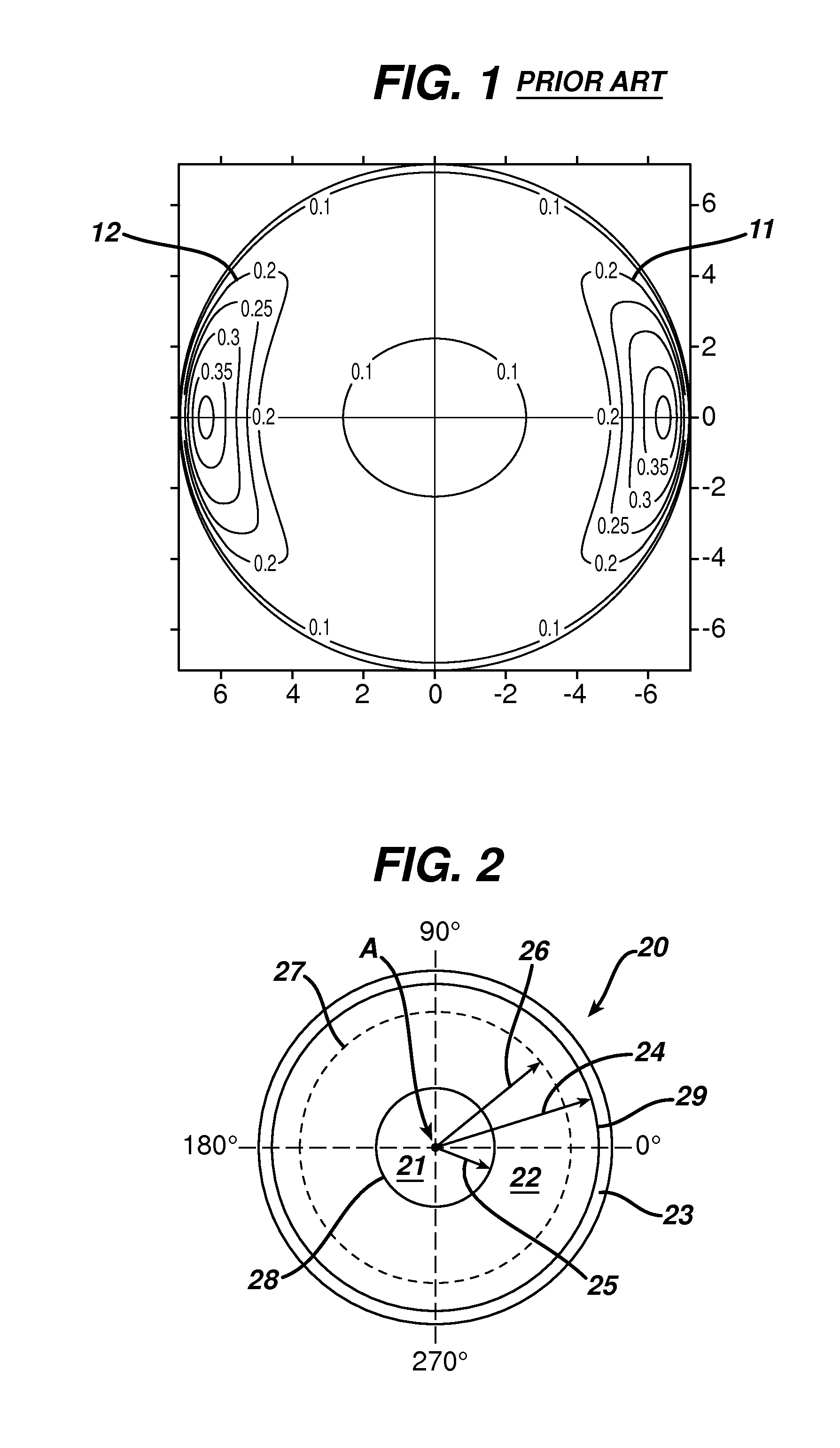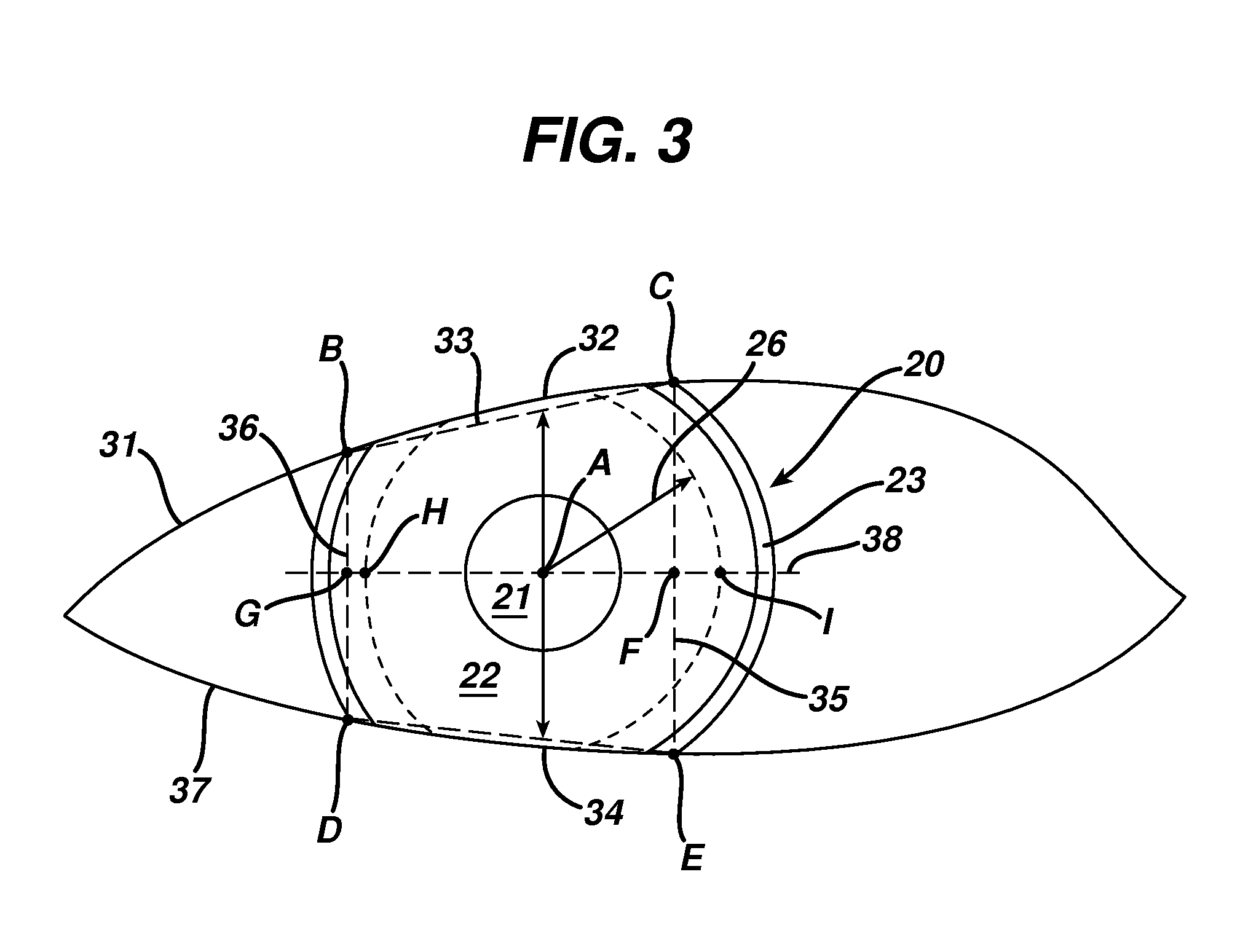Rotationally Stabilized Contact Lenses and Methods for their Design
a technology of contact lenses and rotating stabilizers, applied in the field of contact lenses, can solve the problems of disadvantageous symmetric stabilization zones, use of these lenses, and inclination of the eye to rota
- Summary
- Abstract
- Description
- Claims
- Application Information
AI Technical Summary
Problems solved by technology
Method used
Image
Examples
example 1
[0045]A prior art contact lens, shown in FIG. 1, is designed having a sphere power of −3.00 diopters, a cylinder power of −0.75 diopters and a cylinder axis of 180 degrees. The dimensional parameters of the lens features and stabilization zones are shown in Table 2 as Example 1. Also, and as shown in FIG. 1, the lens has two, vertically and horizontally symmetric thick zones in the lens periphery. In FIG. 5 is shown that when the lens is rotated off axis by 45 degrees, it returns to within 5 degrees of the stable position 0 in 33 seconds. In FIG. 6 is shown that the lens maintains a centration positions (within 0.2 mm) during the return to a stable orientation and achieves a stable value in 26 seconds. The value within 0.2 mm is a clinically acceptable amount of decentration from a visual performance viewpoint. Thus, during rotation back to a stable position, a lens should not decanter beyond 0.2 mm from zero or vision will be impacted.
TABLE 1ULALLAULPLLP−4.41 degrees1.06 degrees3.7...
example 2
[0046]A lens with sphere power of −3.00 diopters, a cylinder power of −0.75 diopters and a cylinder axis of 180 degrees and a customized stabilization zone is designed according to the method of the invention using the ocular measurement parameters of Table 1 and lens dimensional parameters shown as Example 2 in Table 2 below. By “nasal” and “temporal” in Table 2 is meant the side of the lens that will be on the nasal and temporal side of the lens, respectfully. FIG. 7 depicts the front surface of the lens in which stabilization zones 71 and 72 are asymmetric.
[0047]In FIG. 5 is shown that, when the lens is rotated off axis by 45 degrees, it returns to a stable position (within 5 degrees) in 16 seconds. In FIG. 6 is shown that the lens maintains an acceptable centration position (within 0.2 mm) during the return to a stable orientation and achieves a stable value in 15 secs. These values are a significant improvement in comparison to the lens of Example 1.
TABLE 2Example 1Example 2Len...
PUM
 Login to View More
Login to View More Abstract
Description
Claims
Application Information
 Login to View More
Login to View More - R&D
- Intellectual Property
- Life Sciences
- Materials
- Tech Scout
- Unparalleled Data Quality
- Higher Quality Content
- 60% Fewer Hallucinations
Browse by: Latest US Patents, China's latest patents, Technical Efficacy Thesaurus, Application Domain, Technology Topic, Popular Technical Reports.
© 2025 PatSnap. All rights reserved.Legal|Privacy policy|Modern Slavery Act Transparency Statement|Sitemap|About US| Contact US: help@patsnap.com



